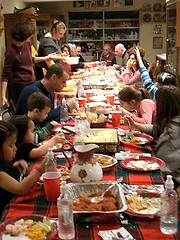AARP Hearing Center

As families across the Hoosier state gather for the holidays, AARP Indiana is encouraging folks to assess their current caregiving plans. Last year, 1.34 million Hoosiers provided unpaid care for a loved one, placing the economic value of their help at $9.4 billion. Nationwide, one in four adults provides such unpaid care.*
“We consistently see in our surveys that an overwhelming majority of people want to age at home as long as possible,” says AARP Indiana State Director June Lyle. “With that decision often comes a lot of time, energy and money spent by family members who are providing care for their older loved one. We want to be sure families have the resources they need to create a caregiving plan that takes into account the physical and emotional wellbeing of both the one being cared for and the caregiver.”
The “average” U.S. caregiver is a 49-year-old woman who works outside the home and spends nearly 20 hours per week providing unpaid care to her mother for nearly five years. Their caregiving responsibilities often include: providing companionship and emotional support, helping with household tasks, handling bills and dealing with insurance claims, carrying out personal care, being responsible for nursing procedures in the home, administering and managing multiple medications, identifying, arranging, and coordinating services and supports, hiring and supervising direct care workers, arranging for or providing transportation to medical appointments and community services, and playing a key role of “care coordinator.”
“AARP has an excellent go-to place for information in the Caregiving Resource Center,” Lyle says. “During the holidays I would encourage families to assess the needs and wants of their older loved ones, while also taking into account the emotional, physical and economic impact providing such a level of care has on the family caregiver. In the coming year, caregiving is going to be a top work priority for AARP Indiana, so please look for events and other resources near you.”
*The statistics come from an AARP Public Policy Institute report, “ Valuing the Invaluable.”
Photo credit: @MoToMo via Flickr































































